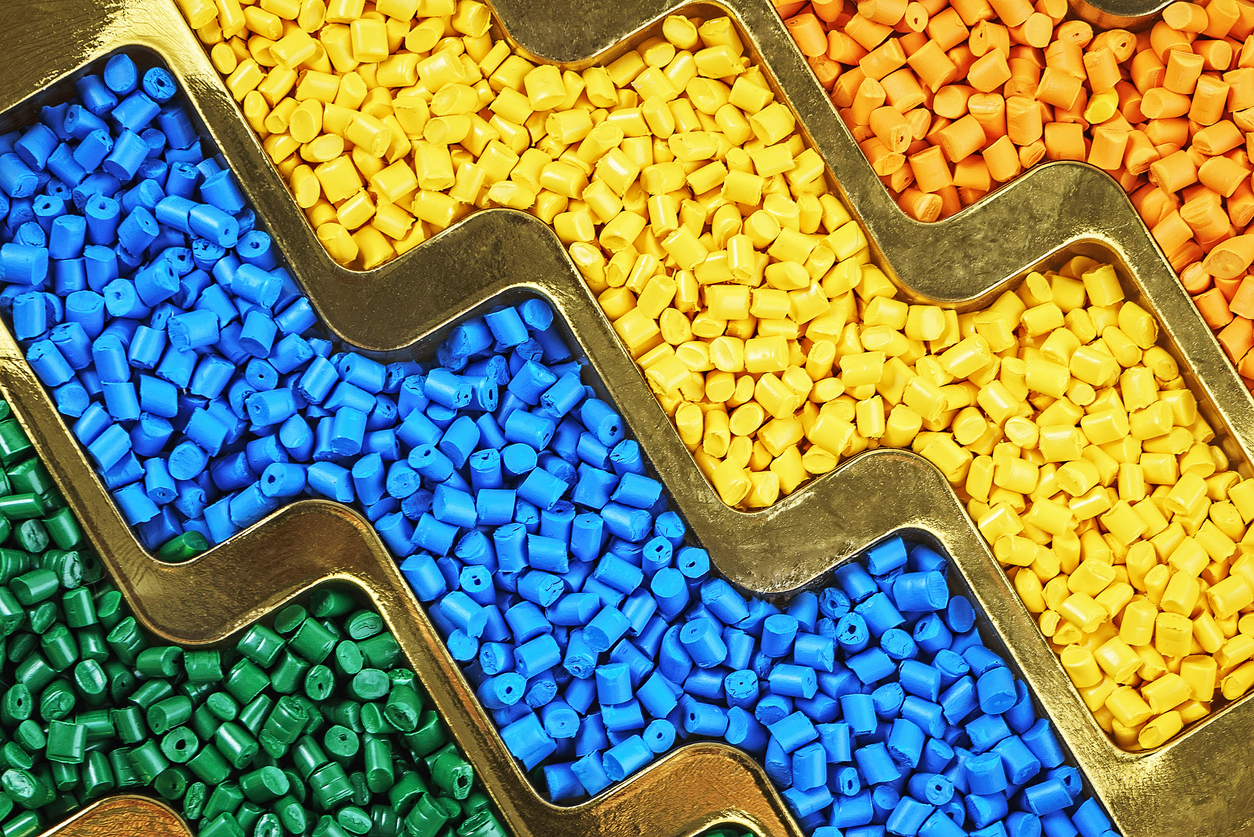Injection molding, at its core, involves melting thermoplastic and forcing it into a heated mold. Temperature regulation throughout the process is crucial for optimizing viscosity and ensuring consistent material flow. This is achieved using special heaters. While several different types of heaters can accomplish this, high-performance polymer molding (PEEK, PPS, PEI, etc.) requires a heater that can reach high temperatures, often up to 300°C (572°F). Since this can’t be achieved with water-based systems, high-temperature oil heaters are used.
The Role of High-Temperature Oil Heaters in Engineering-Grade Polymer Molding
A specialized thermal fluid (called thermal oil or hot oil) is heated and circulated through mold channels for consistent and precise temperature control throughout the mold to promote optimal plastic flow, part quality, and cycle times. Heat is transferred from the oil to the mold, and the oil is returned to the heater, where the cycle continues.
Oil heaters are preferred for high-performance and engineering plastics over water-based heaters due to the oil’s excellent thermal conductivity and the high temperatures they can reach. The oil’s excellent heat transfer properties and high thermal stability allow it to maintain a consistent temperature throughout the entire heating system. This is vital for producing high-quality plastic parts. The circulating oil provides uniform heat to the mold, preventing temperature variations that can lead to defects.
High-temperature thermoplastics require tighter thermal control during processing to ensure the polymer remains within its optimal processing window. These materials are often processed at temperatures close to their thermal degradation point, necessitating precise temperature control to prevent chemical changes and the breakdown of polymer chains. These changes can result in the loss of desirable properties, such as strength, stiffness, or chemical resistance. Fluctuation in the temperature during processing can also lead to shrinkage, warpage, stress marks, incomplete filling, or other dimensional inconsistencies in the part.
One property of polymers that also influences their behavior with temperature changes is their coefficient of thermal expansion (CTE), which measures the change in dimensions of a material per unit change in temperature. Some high-temperature plastics, like PEEK and Torlon PAI, are engineered to have very low CTEs, providing them with dimensional stability across a wide temperature range. Others, such as some acetal (POM) materials, exhibit a relatively high CTE, requiring a greater degree of thermal stability during processing.
Questions to Ask Your Injection Molder About Their Systems
Most molders that process high-performance plastics will likely have high-temperature oil systems. But part consistency, process reliability, and long-term tool health depend on how well those systems are specified, maintained, and integrated into the overall molding process. Here are some questions to ask your molder to ensure you consistently receive high-quality parts.
- Temperature control and accuracy – What is the temperature range of your oil heaters, and what is their typical temperature accuracy (±1°C, ±5°C)? How do you monitor and control the temperature of the oil at different points in the system (e.g., at the inlet and outlet of the mold)?
- System Responsiveness – How quickly does the system return to setpoint after the mold opens or closes, or during purge?
- Heat Distribution – How is the thermal oil routed through the mold? Can you provide a diagram of the cooling/heating channels? What measures are in place to ensure uniform temperature distribution across the entire mold face, especially for large or complex parts? How do you compensate for thermal variations caused by different wall thicknesses or part features? Can you run multi-zone heating on complex tools, or is it a single-loop setup?
- Control System Integration – Is the heater fully integrated with the press controls and process monitoring, or is it standalone? Integrated systems allow for better diagnostics, alarms, and repeatability.
- Process Monitoring and Data Logging – Can you provide a time-stamped record of the mold temperature for a given production run? What are your standard quality control procedures related to mold temperature, and what are the acceptable tolerances? What alarms or safety features are in place to alert operators if the oil temperature deviates from the specified range?
- Preventive Maintenance and Calibration – What is your maintenance schedule for heaters, and how often are systems calibrated or thermally mapped? What is the typical lifespan of the thermal oil, and what is your process for testing and replacing it?
- Machine Specific Capabilities – Do you have dedicated oil heaters for specific machines, or are they shared among multiple presses
- Mold Design – Do you have in-house expertise to advise on the optimal layout of heating channels for a new mold design, based on your equipment’s capabilities? How do you verify the effectiveness of the heating channels after a mold is built? (e.g., with thermal imaging or a mold trial report)
- Tool Health – Is your oil compatible with my tool material? What measures do you take to prevent the formation of sludge or carbon deposits in heating channels?
It is essential for engineers to not only inquire about the equipment an injection mold has, but also to ask how it performs under load, how it is validated, and how it is integrated into their quality system. That’s where the gap often lies between a molder who can run PEEK, for example, and one who can do it consistently, economically, and within spec.
Ready to Talk High-Temp Polymer Molding?
If you’re sourcing parts made from high-performance thermoplastics like PEEK, PEI, or PPS, temperature control isn’t just a process variable; it’s a critical factor. Not every injection molder has the systems or expertise to maintain the tight thermal control these materials demand.
At Ensinger, we not only use high-temperature oil heaters but also possess the infrastructure, technical expertise, and process controls to consistently produce your parts within specification.
Let’s talk about your next project. We’ll show you how our capabilities align with your application requirements.
